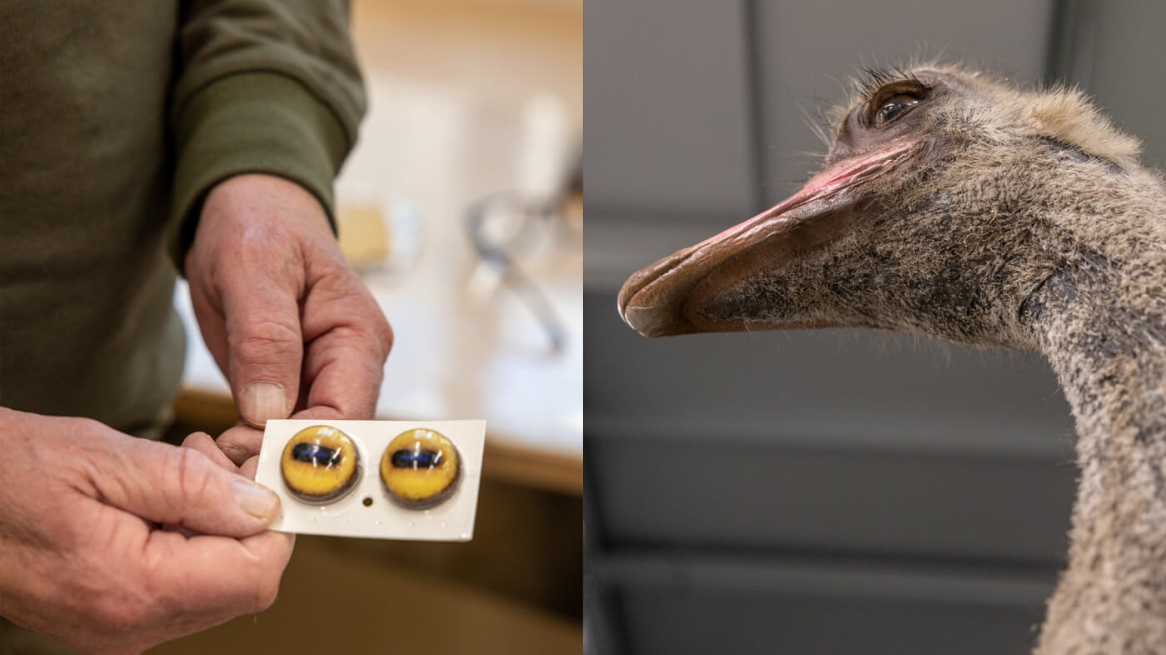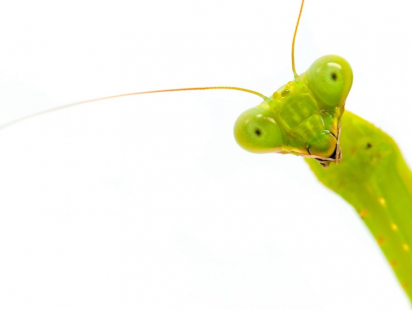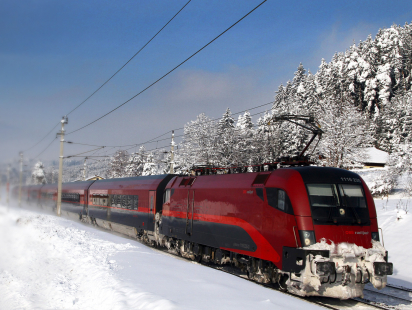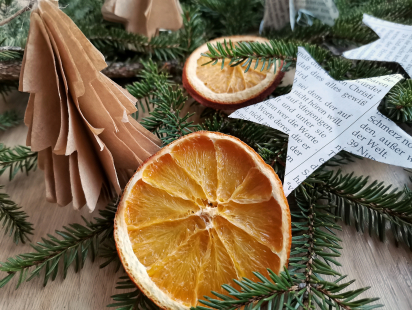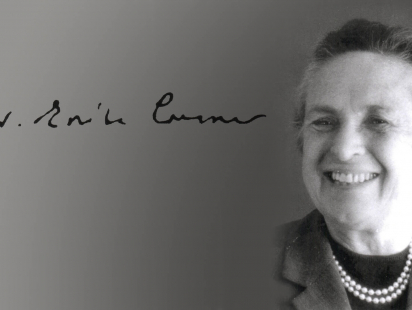It was with mixed feelings that I drove to the Collection and Research Centre of the Tyrolean State Museums on a cold November morning. Over the years I have met many very interesting people for the Innsbruck Blog, but it has never been about dead animals (with the exception of the last blog post about the new TV series Aus die Maus!). Peter Morass, Stvr. Peter Morass, deputy head of zoology/vertebrates at the Tyrolean Provincial Museums, is a luminary in his field of taxidermy and is already waiting for me on the lower floor of the modern and wonderfully light-flooded building.
My visit begins in the workshop, where I am relieved to discover nothing at all that I am afraid of. Instead, I discover that I know surprisingly little about stuffed animals. Maybe it's because there are no hunters in my family? I like the passion with which Peter - as usual in Tyrol we are on a first-name basis - talks about his profession and the animals. He speaks very respectfully and with a great knowledge of the animals that surround him. The inner spirit of research comes out in me and my curiosity grows. So we move to the storage rooms of the natural sciences, where I get my first glimpse of the treasures of the house.
IN THE STORAGE HALLS OF THE NATURAL SCIENCES
8,000 square meters of storage space house several million objects from the fields of art, culture and the natural sciences until they are put on display again. We are now in the natural sciences depot.
The shelves, which can be moved with cranks, are reminiscent of police archives in films. The only difference is that instead of files, specimens of all kinds are neatly stored here at a constant temperature of 19 degrees. We start with the really big animals, the tigers, lions, ostriches and deer. Peter Morass has taxidermied just about every animal there is in his lifetime. Well-connected as he is as a museum taxidermist, a wide variety of animals end up with him after their natural (!) demise.
"Most of the animals we get, for example, from the Alpenzoo, from the ASFINAG and sometimes also from people who have perfectly cleaned window panes at home, where the birds bang against them..." Peter tells me. Among others, the wolf that was run over on the Europabrücke in June also ended up here.
CURIOUS & UNUSUAL
They look incredibly real and it's certain: I wouldn't want to spend a night in the warehouses. I have almost a little scruples to photograph the two copulating tigers. Thereby, the two even belong to the so-called prank preparations. This means in the first place that no poisonous substances were used for the maintenance and that one has here actually the opportunity to touch wild animals which one should otherwise rather never come so close. The taxidermied lion is even sturdy enough that you could sit on it. Here, too, I personally notice an inner resistance, but I still don't miss the chance to touch the two animals a bit hesitantly, but completely safe and legal! Who already knows how such a tiger skin feels? In any case, quite different than that of a cat or even a plush animal..
The copulating tigers have been on display many times, currently they are waiting in storage for their next assignment. ©Lea Hajner
In addition to the world's largest collection of butterflies in the Alps, there are also plenty of curious pieces to be found here. For example, the two-headed calf from Obermieming, which saw the light of day in 1989. So it is not a macabre handicraft, but Mother Nature's work. As proof (as is generally the case here in the collection, by the way), the fused skull bones have been lifted.
NOT STEAMING FOR A LONG TIME
The collection of loose material was born out of a hobby, Peter tells me, who has already meticulously searched large areas in the mountains around Innsbruck for the remains of various animals. The poop, which has long since stopped steaming here, tells the researchers a lot about the diet and whereabouts of alpine animals such as ptarmigans, hares and co. And indeed, you can see the different colours at a glance, because depending on the season, the food in the mountains naturally changes a lot. And again, I notice how unbelievably many interests one can pursue in the mountains. Far away from the usual activities like climbing summits, skiing or looking for mushrooms.
I am astonished when I learn that there are also a lot of other prepared animals in the shop. Mice are prepared as so-called brats, which you can imagine as a somewhat simpler form of taxidermy stuck on a skewer. Here it is less about authenticity when sifting, but scientific aspects. These aspects probably also take precedence with the mouse bellows, which I would hardly recognize as such: after all, they come from the stomach of an eagle. There, too, they need time to be digested, and if the animal dies before that, they are found when the contents of the stomach are examined.
On the left, an ark of the lotus collection and on the right, the mice, which have already been digested. ©Lea Hajner
Afterwards we take a look at the beetle and butterfly collection, which is enormous and diverse. There are also some Viennese night peacock eyes here - they grow up to 17 centimetres and may be familiar to some of you from the logo of the Long Night of Museums. By the way, they are rarely found in nature in Tyrol, they are actually more native to the east of Austria.
When Peter took part in the European Taxidermy Championships in Dortmund a few years ago, he submitted 14 preparations. All 14 were promptly awarded prizes, and one even became European champion. Now at the latest it is clear that we are in the absolute top league here.
HOW DO YOU PREPARE ANIMALS, MR MORASS?
Now I want to know exactly how animal preparations are actually made "I don't process fresh stuff. For one very simple reason: they often have parasites, fleas, ticks, etc., so the animal first goes into a plastic container. So first the animal goes into a plastic bag in the freezer."
Then the animal's skin is then peeled off with a fine cut and turned inside out. Fur or feathers are then on the inside, and the skin, which is usually very greasy, is on the outside. The skin is cleaned and tanned and finally the skin is placed wet on plastic moulds. These plastic animal bodies can sometimes be bought, or they have to be made by the artist. This is the case, for example, with the current preparation of a king penguin, here Peter forms the inner body himself. The feet and beak have already been moulded and are also made by hand using modelling clay. In this particular case, all the original bones of the penguin are even kept. Later they will be glued back together to form a skeleton to give an even more accurate view of the anatomy.
When the mould is finished and the leather tanned, the skin is pulled over and sewn shut. The process is the same for every specimen - whether it's a mouse, eagle or tiger. "I compare it a bit to the work of a window dresser" explains Peter. With five millimetre stitches, the skin is sewn together by hand as if by a surgeon using a plastic thread. With large animals, i.e. long cuts, this takes a lot of time..
Tip: The result will soon be on display in an exhibition about the adaptability of Alpine animals in the new branch of the Tyrolean Provincial Museums in Weiherburg (access only via the Alpine Zoo)!
The final step is to insert the eyes. Glass eyes are actually available in all sizes and colors, whereby sheep eyes are easier to get than penguin eyes. Finally, if necessary, eyelids and faded areas of skin are dyed.
So what makes a good taxidermy?
"The most important thing in a preparation is always the eye. We humans say that the eye is the mirror of the soul. A badly set eye makes the animal dead, a well set eye makes it look alive. I am not the dear God who breathes life into them, but one tries to make it as alive as possible. And then of course they should last forever...God willing, we'll see."
By the way, the time it takes to make a specimen differs greatly depending on the project; a small bird is ready in two hours - the penguin, which is not yet ready, has already taken a week of work.
By the way, this specimen is also authentic and long-lasting, because it dates back to the 18th century! The Slender-billed Curlew is extinct in Tyrol, but the specimen has lived on in the museum/collection for over 100 years.
PANDAS AND SUSHI
A few years ago Peter had the honour to prepare the naturally deceased panda from the Schönbrunn Zoo. All pandas worldwide are on loan from the Chinese state and must be returned after their demise. In this case the panda Long Hui started his last journey taxidermied (+bones). Speaking of wild animals and zoo animals: Peter Morass does not taxidermy pets and not on principle.
By the way, the native of Innsbruck taught himself his profession. He worked for the Imperial Bird Museum in Japan for 16 years before returning to Tyrol. Animals, dead or alive, or not - with Peter you can also have a good chat about Japanese food and exchange tips on where to get the best soba and sushi in Tyrol. After 16 years he also speaks fluent Japanese, which is not very common in Tyrol. But that would go beyond the scope of this article... So I say goodbye to this informative visit and thank you again for the insights I was able to take away for the Innsbruck Blog.
A small recommendation at the end: the rooms of the Collection and Research Centre of the Tyrolean Regional Museums impressed me. Normally they are not open to the public - but during events like the Long Night of Museums they open their doors for guided tours. In this case, I can only warmly recommend a visit!
Rate this article
Show me the location on the map
Travel blogger & book author with a passion for hiking, wild herbs and alpine cuisine. #onlyinibk
Similar articles
The zoo is at the cradle of my love for Tyrol. It awakened in me the longing…
I commute a lot between Innsbruck and Vienna and I know the advantages of both cities. Many…
The darker and colder it gets outside, the cozier and cozier it gets inside. When, if not…
The physical chemist Erika Cremer (1900-1996) is one of the most important research personalities of the University…








